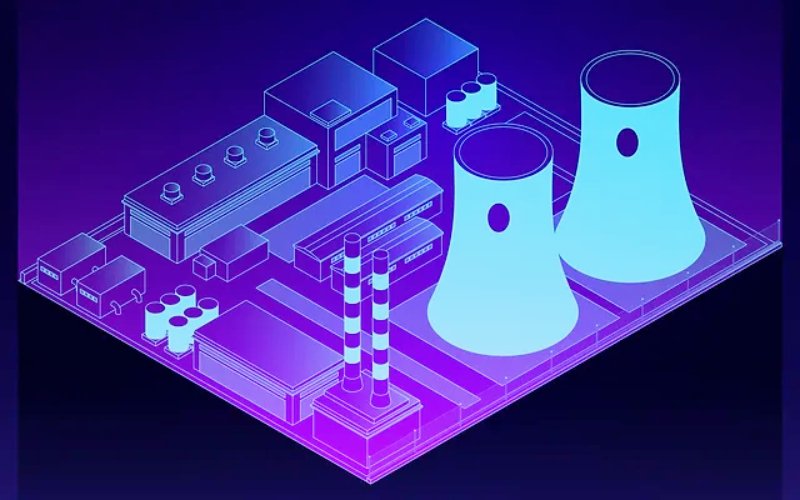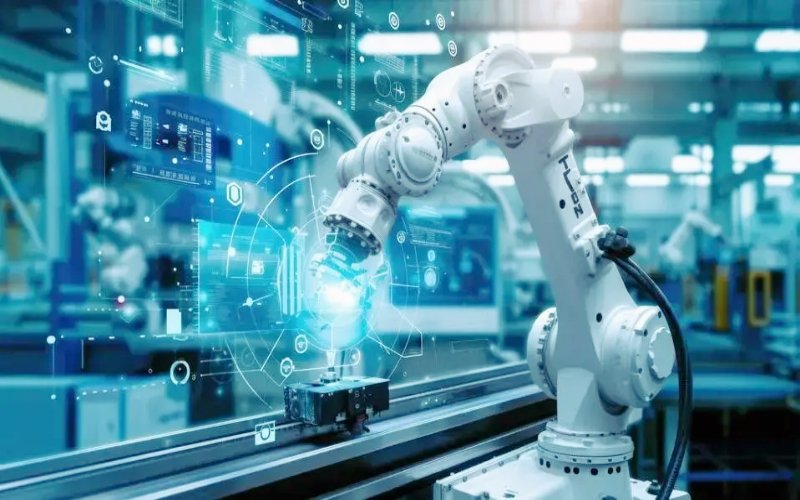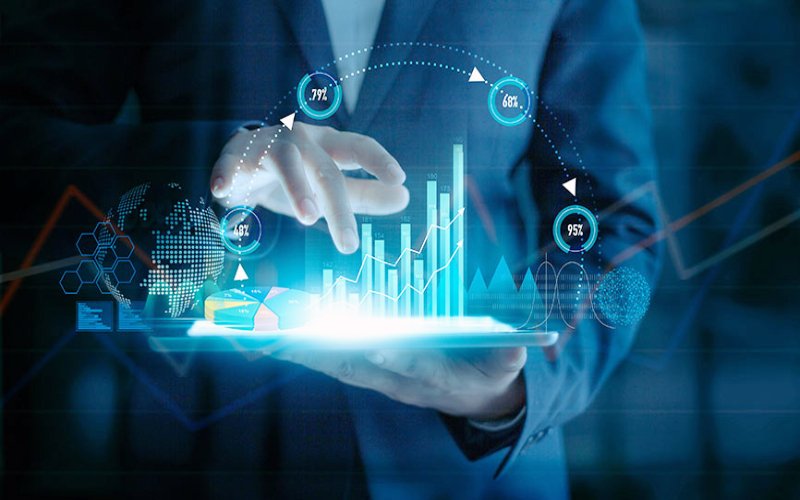Digital Twin Technology is making significant strides in various fields, providing new insights and capabilities. This guide explores Digital Twin Technology, its applications, emerging trends, success stories, and best practices for implementation. Let’s dive into the world of digital twins and discover how they are transforming industries.
What is Digital Twin Technology?
Using digital twin technology, actual systems, processes, or things can be virtually replicated. These digital replicas, or “digital twins,” simulate the real-world entities and their interactions within a digital environment. This technology allows organizations to monitor, analyze, and optimize real-time performance through simulations.
How Digital Twins Work
Digital twins are linked to their physical counterparts through data sources that continuously update the virtual model. This real-time data connection ensures that the digital twin accurately reflects changes and conditions in the physical world. By leveraging Digital Twin Technology, businesses can perform simulations, analyze scenarios, and make data-driven decisions with greater accuracy.
The Evolution of Digital Twin Technology
Since its debut, digital twin technology has seen substantial evolution.Initially used for basic simulations, it now incorporates advanced features such as real-time data integration, predictive analytics, and machine learning. This evolution has expanded its applications across various industries, enhancing the technology’s value and impact.
Types of Digital Twin Technology
Digital Twin Technology comes in several forms, each serving different purposes and industries. Understanding the different types can help organizations select the right approach for their needs.
Product Digital Twins
Product digital twins represent physical products throughout their lifecycle. These twins provide insights from initial design through manufacturing and use, enabling real-time monitoring and analysis of product performance. For instance, a digital twin of a vehicle can help track its condition, optimize performance, and predict maintenance needs.
Data Twins
Data twins are digital representations of data streams and are commonly used in applications like Google Maps. They offer real-time insights and analytics based on live data, such as traffic conditions or user behavior. Data twins enhance decision-making by providing accurate and up-to-date information.
System Twins
System twins model the interactions between physical and digital processes, such as supply chain management or manufacturing operations. They help organizations understand and optimize complex systems by simulating their behavior and interactions in a controlled environment.
Infrastructure Twins
Infrastructure twins represent physical infrastructure like buildings, highways, or stadiums. These digital replicas assist in managing and optimizing infrastructure by providing detailed simulations and analyses of their performance and conditions.
Emerging Trends in Digital Twin Technology
The landscape of Digital Twin Technology is continually evolving, with several emerging trends shaping its future. These trends indicate the growing sophistication and broader application of digital twins.
Integration with Artificial Intelligence
The integration of Artificial Intelligence (AI) with Digital Twin Technology is a significant trend. AI enhances the capabilities of digital twins by enabling advanced predictive analytics and automation. This combination allows for more accurate simulations and informed decision-making.
Increased Use of Internet of Things (IoT)
Digital twin technology heavily relies on the Internet of Things (IoT).IoT devices collect real-time data from physical objects, feeding this information into digital twins. This integration ensures that digital twins provide up-to-date simulations and insights, improving their utility and effectiveness.
Enhanced Realism with Augmented Reality (AR)
Augmented Reality (AR) is being used to enhance the realism of digital twins. AR technology overlays digital twin data onto physical environments, providing a more interactive and intuitive experience. This advancement is particularly useful in fields like manufacturing and urban planning.
Growth in Digital Twin Applications
The applications of Digital Twin Technology are expanding rapidly. From smart cities and autonomous vehicles to personalized medicine and advanced manufacturing, digital twins are finding new uses and opportunities. As technology continues to advance, the potential applications of digital twins are virtually limitless.
Real-World Success Stories
Digital Twin Technology has demonstrated its value through various real-world success stories. These examples highlight how different organizations are leveraging digital twins to achieve remarkable results.
Emirates Team New Zealand
Emirates Team New Zealand, a leading sailing team, uses digital twins to test boat designs and optimize performance. By creating digital replicas of their boats and sailing environments, the team can simulate thousands of design variations, enhancing their competitive edge and improving designs.
Anheuser-Busch InBev
Anheuser-Busch InBev employs digital twins to manage and optimize their brewing and supply chain processes. This technology enables real-time adjustments and compensates for production bottlenecks, leading to increased efficiency and reduced downtime.
SpaceX
SpaceX utilizes digital twins for their Dragon capsule spacecraft, creating detailed simulations to monitor and adjust various systems. This approach helps ensure the safety and reliability of their spacecraft during missions, contributing to their success in space exploration.
The Role of Digital Twin Technology in Sustainability
Digital Twin Technology plays a crucial role in advancing sustainability efforts across various industries. By optimizing processes and reducing waste, digital twins contribute to more environmentally friendly practices.
Reducing Waste in Manufacturing
In manufacturing, digital twins help reduce material waste by simulating and refining product designs. This results in more efficient production processes and less scrap material, supporting sustainability goals.
Enhancing Supply Chain Efficiency
Digital twins of supply chains allow organizations to optimize logistics and reduce emissions. Improved efficiency in transportation and inventory management helps lower environmental impact and supports sustainable practices.
Improving Energy Management
Digital twins can also be used to manage energy consumption more effectively. For example, digital twins of buildings can monitor and control energy use, leading to reduced consumption and lower carbon footprints.
Best Practices for Implementing Digital Twin Technology
To maximize the benefits of Digital Twin Technology, organizations should follow best practices that ensure effective implementation and utilization.
Start Small and Scale Gradually
Organizations should begin with a small-scale digital twin project and expand gradually as they gain experience. This approach allows for manageable implementation and helps identify potential challenges early on.
Invest in Data Quality
High-quality data is essential for effective digital twins. Investing in robust data collection and management systems ensures that digital twins are accurate and reliable.
Collaborate with Experts
Implementing digital twins often requires specialized knowledge. Collaborating with experts or consulting firms can guide the development and deployment of digital twins, ensuring successful implementation.
Continuously Monitor and Update
Digital twins should be regularly monitored and updated to reflect changes in the physical world. Continuous maintenance ensures that digital twins remain accurate and useful for decision-making.
Future Prospects and Opportunities
The future of Digital Twin Technology holds exciting prospects and opportunities. As technology continues to advance, digital twins are expected to become even more integral to various industries.
Advances in Simulation and Modeling
Future developments in simulation and modeling technologies will enhance the capabilities of digital twins. Improved algorithms and computing power will enable more complex and accurate simulations, expanding the potential applications of digital twins.
Broader Adoption Across Industries
Digital Twin Technology is likely to see broader adoption as more industries recognize its value. Increased implementation across sectors will make digital twins more prevalent and accessible.
Integration with Emerging Technologies
The integration of digital twins with emerging technologies, such as blockchain and quantum computing, could unlock new possibilities and applications. These advancements may lead to innovative uses of digital twins in the future.
Also visit on techitl.com.




